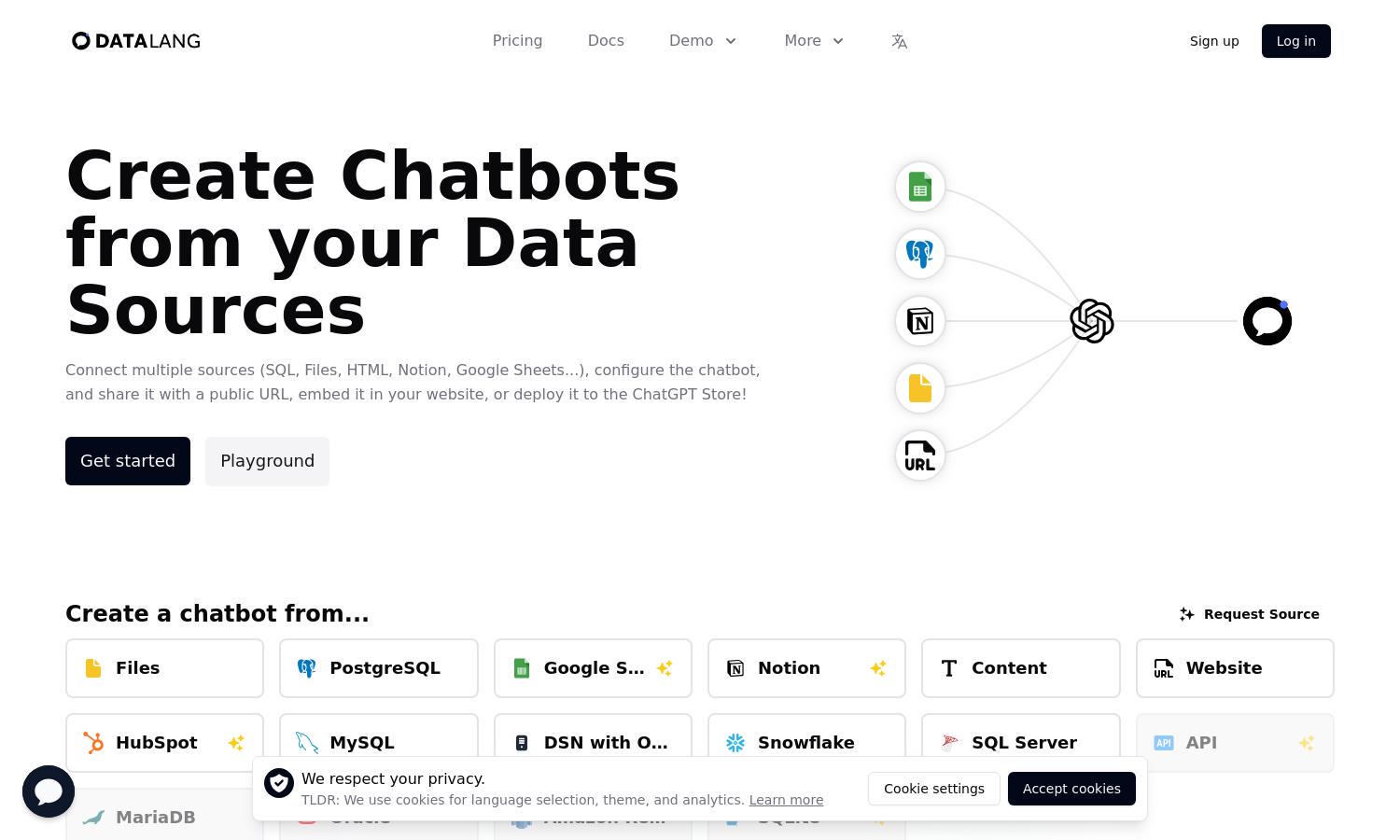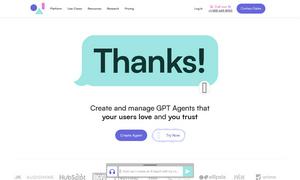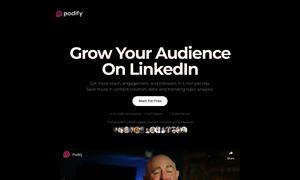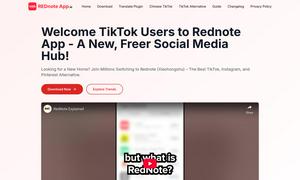DataLang

About DataLang
DataLang is a platform designed for individuals and teams looking to build custom chatbots that connect to various data sources such as PostgreSQL, Notion, and Google Sheets. It simplifies the process of querying data with AI, allowing users to derive valuable insights and enhance their customer interactions.
DataLang offers several pricing plans suitable for all users, from a free tier allowing basic chatbot creation to a Business plan for larger teams with extensive needs. Monthly and yearly subscriptions provide flexibility, with significant discounts for annual payments, ensuring value for every user.
DataLang features a user-friendly interface that allows for seamless navigation and interaction. Its intuitive layout enables users to effortlessly configure chatbots and integrate various data sources, ensuring an optimal experience with advanced functionalities tailored to their needs and boosted by AI.
How DataLang works
To begin using DataLang, users can set up their data sources by connecting databases or files. After configuring their data views, they select which sources to train their chatbot. Following training, users can chat with the data for insights and share their custom chatbot via a public URL or embed it on websites.
Key Features for DataLang
Custom Chatbot Creation
DataLang's custom chatbot creation feature allows users to seamlessly integrate multiple data sources, offering tailored interactions. Users can quickly connect their databases and enhance customer engagement by deploying chatbots that respond intelligently, improving overall data accessibility and user experience.
Multi-Source Connectivity
The multi-source connectivity feature of DataLang uniquely enables users to integrate various platforms, including SQL databases, Google Sheets, and Notion. This flexibility enhances user experience, allowing for richer queries and insights while streamlining data management and interaction within a single interface.
Flexible Sharing Options
DataLang offers flexible sharing options, allowing users to distribute their custom chatbots through public URLs, embedded widgets on websites, or direct API access. This versatility ensures that users can easily share insights and enhance customer interaction across numerous channels, maximizing their chatbot's reach.
You may also like:








